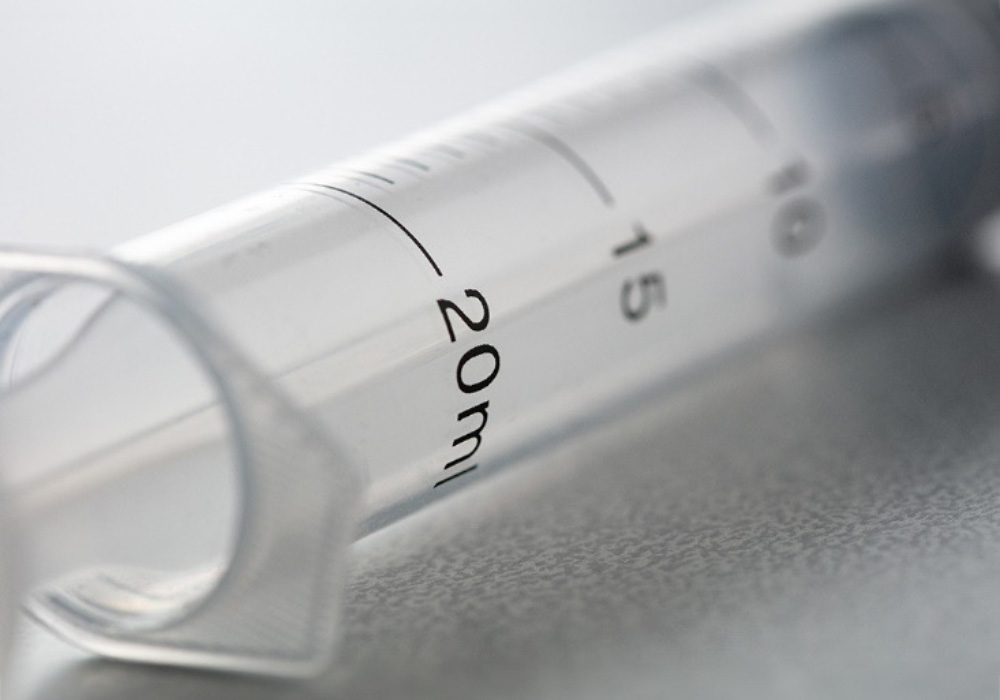In nursing school, we learned that the maximum volume for a single subcutaneous (SC) injection is 1.5–2 ml. However, today’s unique antineoplastic formulations may require volumes up to 15 ml (e.g., daratumumab and hyaluronidase-fihj), forcing nurses to rethink administration practices. Currently, evidence on large-volume SC administration procedures is sparse, making it difficult to determine best practice.
Most drugs with large-volume SC dosing are monoclonal antibodies (mAbs). That drug class represents a significant portion of recent U.S. Food and Drug Administration approvals for chronic conditions, including some cancers. In 2017, rituximab and hyaluronidase human debuted as the first mAb approved for large-volume SC administration (11.7–13.4 ml). Since then, several other IV mAbs (e.g., trastuzumab and hyaluronidase-oysk, daratumumab and hyaluronidase-fihj, pertuzumab, trastuzumab, and hyaluronidase-zzxf) were authorized for SC administration with volumes ranging from 5–15 ml.
The Case for SC
IV administration of mAbs in an infusion center can consume large amounts of resources, including nursing care and chair time, because of the need for drug titration and monitoring. The transition from IV to SC administration eliminates the need for titration and, in some cases, decreases the risk for hypersensitivity reactions or severe side effects. For example, bispecific T-cell engager (BiTE) mAbs were originally developed for treatment of hematologic malignancies and are being investigated for treatment of several solid tumors. Cytokine release syndrome (CRS) is a serious effect of BiTEs, but SC administration could reduce the risk. More than half of the BiTEs approved in 2022 and 2023 are given SC.
SC administration may also help address issues such as staffing shortages, overcrowded infusion centers, and increasing healthcare costs. The convenience of an SC injection and reduced time at a healthcare facility may also improve quality of life for patients and caregivers. Because of the advantages, the number of SC cancer treatments will likely increase and diversify in the coming years.
Increased use of the SC route is leading to innovation in manufacturing processing techniques and devices developed specifically for large volumes, such as on-body devices, syringe pumps, and handheld autoinjectors. Novel developments have the potential to change current practices (e.g., home administration for subsequent doses), but additional evaluation is needed before nurses will see them in practice.
How Nurses Are Innovating
Large-volume SC medications require 3–8 minutes for administration, forcing nurses to hold their body position for an extended period. Certain workspaces (e.g., patient chairs without collapsable arms, close quarters, lack of privacy) and a lack of ergonomics training may inhibit proper body mechanics during administration. Work-related muscle strain can result from an inability to move or rest the hand for several minutes while administering. Prescribing information for most large-volume SQ medications does not provide details regarding the recommended method for administration.
Published evidence comparing various ways to give large-volume SC medications is lacking; however, in a 2024 ONS Congress podium abstract, oncology nurses demonstrated that a winged infusion set is an easy-to-use device that improves nursing body mechanics, stability of the needle, and patient satisfaction.
A winged infusion set includes a 18G–27G needle, tubing, and a hub to attach a syringe. The tubing creates a concern for drug loss. Two ways nurses are addressing that are the air lock or sandwich method and the saline sandwich method. Both methods have advantages and disadvantages and lack significant supporting evidence.
Without a sufficient body of evidence, determining the best supplies and administration techniques for large-volume SC medications is difficult. A foundational step in evidence-based practice is reviewing the literature, but we need a robust body of evidence to make that possible.
If you and your team are exploring ways to administer large-volume SC injections, consider involving key stakeholders and formally gathering data. Then, share your work with the wider nursing community by submitting abstracts to nursing conferences such as ONS Congress® and ONS Bridge™ and publishing a manuscript in peer-reviewed journals such as the Clinical Journal of Oncology Nursing or Oncology Nursing Forum.






